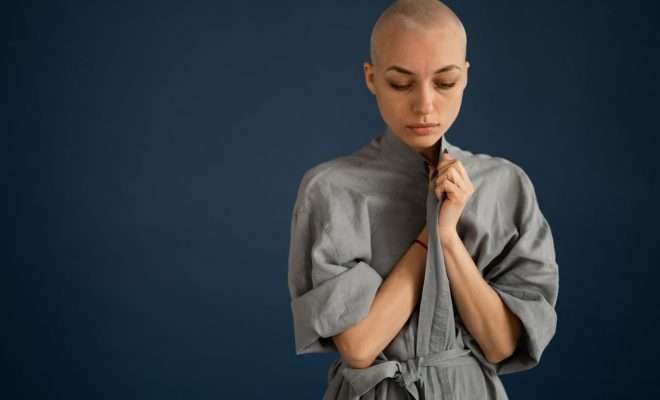
What is Alopecia and How Does it Affect Women?
What is Alopecia and How Does it Affect Women?
Hair loss, generally referred to as alopecia, can afflict people of any age or gender. It can, however, have a particularly large effect on women, affecting both their emotional and physical well-being. Alopecia can manifest in a variety of ways, each with its own causes and characteristics. By raising awareness of this illness, we hope to provide women with the knowledge they need to deal with alopecia’s difficulties and find the right care for their particular circumstances. What is Alopecia and how does it affect women?
Recognising Alopecia
If you are wondering what is alopecia areata? It is a form of hair loss that manifests as sudden patches of baldness. This condition disrupts the natural cycle of hair growth, resulting in noticeable thinning or bald spots on the scalp. It’s not limited to the head either; alopecia areata can affect other parts of the body as well. This type of alopecia is just one variation among many, each with its own unique causes and characteristics. Understanding what alopecia areata is can empower individuals to recognise its signs and seek appropriate medical care.
Alopecia Types
The most prevalent kind of baldness in women is called female pattern baldness or androgenetic alopecia, which is defined by progressive hair thinning over time. The classic sign of alopecia areata is sudden, circular patches of hair loss on the scalp or other areas of the body. Another kind, called telogen effluvium, is brought on by conditions including stress, sickness, or hormonal fluctuations and causes temporary hair loss. Scarring alopecia, sometimes called cicatricial alopecia, is a condition in which hair follicles are destroyed and replaced with scar tissue, leading to permanent hair loss. Trichotillomania is a psychological condition in which sufferers obsessively pull out patches of hair, leaving obvious bald areas.
Reasons for Women’s Alopecia
Particularly in female pattern baldness, where hair follicles become sensitive to male hormones, genetics play a major influence. Hormonal changes that transpire during menopause, pregnancy, or childbirth can also result in hair loss. Alopecia may be exacerbated by medical illnesses such as autoimmune diseases, thyroid abnormalities, and scalp infections. Furthermore, hair loss may be temporary or permanent after receiving some therapies, such as antidepressants or chemotherapy drugs. Women’s hair loss can be made worse by lifestyle choices such as emotional stress, over-styling, and bad diet. Alopecia can be properly managed and addressed by being aware of these causes.
Alopecia Symptoms Include
One common symptom is gradual hair thinning, particularly on the top and sides of the head. People may observe spots where their hair gets noticeably sparser or bald patches. A notable symptom that also occurs when brushing or washing hair is excessive shedding. Some people may feel uncomfortable or itchy in the impacted areas. Complete baldness of the scalp or torso may happen in more extreme circumstances. By recognising these signs, people can investigate alopecia treatment alternatives and consult with a doctor as necessary.
The Psychological Effects of Hair Loss
Because of their hair loss, many women feel embarrassed, self-conscious, and even depressed. A decrease in confidence and self-worth in social settings could result from the physical alteration. It can be difficult to manage the emotions associated with alopecia, so it’s critical to get help from medical doctors and mental health specialists. Individuals can learn coping mechanisms from counselling and support groups to help them cope with the psychological effects of alopecia and keep a positive attitude toward life.
Options for Alopecia Treatment
Although there isn’t one treatment that works for everyone, there are a number of ways to manage alopecia and encourage hair growth. Among these are topical drugs that can stimulate hair follicles and promote growth, like minoxidil. Finasteride is one example of an oral drug that may be taken to stop the effects of male hormones on hair follicles. Corticosteroid injections given directly into the scalp can help lessen inflammation and encourage the growth of new hair in cases of severe alopecia. Hair transplant surgery is a more invasive alternative for those seeking a permanent treatment for hair loss.
Conclusion
You may prevent alopecia by being aware of its origins and symptoms and taking proactive measures to treat it. Recall that having alopecia does not diminish your value or beauty. Getting assistance from medical doctors and mental health experts might help you manage the psychological consequences of hair loss. Examine your options for managing alopecia and encouraging hair growth, and adopt self-care routines to preserve your general health.














